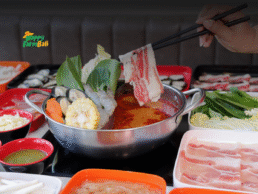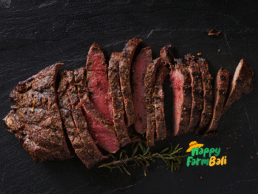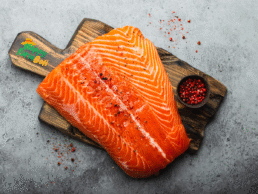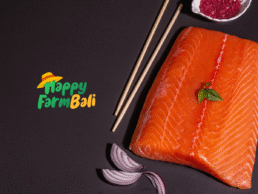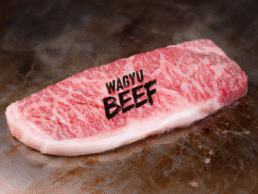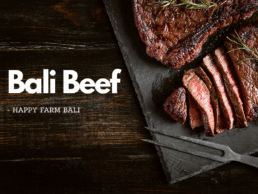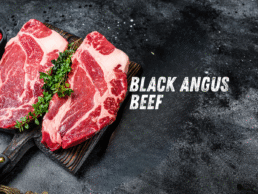Short Plate Beef Hotel and Resorts from Happy Farm Bali
Short Plate Beef Hotel — In the culinary industry, especially in the hospitality and resort sector, the selection of raw ingredients plays a crucial role in determining the quality of the dishes served to guests. One of the most widely used ingredients in professional kitchens is short plate beef a cut of beef known for its tender texture, savory flavor, and rich natural fat. In Bali, the demand for short plate beef hotel continues to increase along with the growth of the tourism industry and the need for hotels to serve internationally standardized dishes. In this context, Happy Farm Bali emerges as a trusted meat distributor capable of meeting the needs of hotels and resorts throughout the island.
Understanding Short Plate Beef: A Flavorful Cut with Premium Taste
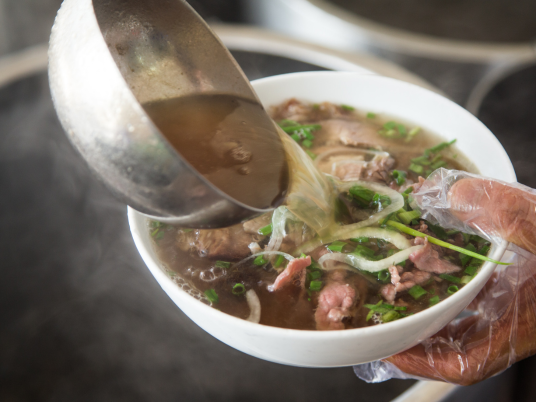
Short plate beef in Bali is a section of the lower belly of the cow, located between the brisket and the flank. This cut is characterized by its abundant marbling fat and fine meat fibers, making it ideal for various preparations such as yakiniku, shabu-shabu, barbeque, steak, and even fusion dishes found in hotel restaurants. The fat that seeps between the meat fibers creates a natural umami flavor and juicy texture when cooked properly.
In professional culinary settings, short plate beef is considered a versatile cut. Hotel chefs often use it not only because of its exquisite taste but also for its ease of preparation and tenderness when slow-cooked. The combination of rich flavor and soft texture makes short plate beef hotel a top choice in many premium menus.
The Role of Short Plate Beef in Hotel and Resort Kitchens
Hotels and resorts, particularly in tourist destinations like Bali, maintain high standards for food presentation. Guests come from different parts of the world, bringing with them expectations for taste, appearance, and ingredient quality. For this reason, short plate beef hotel has become one of the essential ingredients that must always be available in their kitchens. This cut plays a vital role in various menu types—ranging from Western-style breakfasts and beachfront barbecues to fine dining experiences at luxury restaurants.
In hotel kitchen operations, ingredient consistency is key. Inconsistent meat quality or texture can affect the final outcome of a dish. Therefore, hotels and resorts require a distribution partner that can supply short plate beef hotel with consistent quality standards. Besides quality, availability and delivery timeliness are also critical factors. Any delay in meat distribution can disrupt kitchen schedules and guest service.
With the continuous growth of tourism in Bali, the demand for premium meats such as short plate beef hotel has increased significantly. Consequently, major hotels now establish long-term partnerships with trusted local distributors who understand the demanding nature of the hospitality industry.
The Importance of Reliable Meat Distribution for Hotels and Restaurants
The distribution of food ingredients—especially fresh meat—is a crucial stage in maintaining product quality before it reaches hotel kitchens. Meat distributed without proper cold chain management can deteriorate in quality and even compromise food safety. This is why professional meat distributors must have standardized distribution systems, including cold storage facilities, hygienic packaging, and refrigerated delivery vehicles.
For hotels and resorts, hygiene and food safety are top priorities. Beyond taste and presentation, every ingredient entering the hotel kitchen must comply with international food safety standards. A professional distributor ensures that short plate beef remains at optimal temperature throughout the delivery process, preserving its texture, color, and freshness upon arrival.
Additionally, efficient distribution helps hotels maintain operational stability. With timely and consistent meat supply, chefs can design menus more flexibly without worrying about ingredient shortages. This is where the role of local distributors such as Happy Farm Bali becomes vital—not only focusing on product quality but also understanding the dynamic and demanding hospitality market in Bali.
Why Happy Farm Bali Is the Best Short Plate Beef Distributor
As one of Indonesia’s top culinary and tourism hubs, Bali holds high standards for food suppliers. In this regard, Happy Farm Bali stands out as a trusted solution for hotels, resorts, and restaurants that require premium meat supplies—especially high-quality short plate beef hotel.
Happy Farm Bali has years of experience distributing various types of beef, poultry, and frozen products to five-star hotels, international resorts, and renowned restaurants across Bali. Each short plate beef cut supplied by Happy Farm Bali undergoes strict quality control—from selecting the best cattle, hygienic processing, to modern vacuum packaging that preserves the meat’s natural freshness.
The excellence of Happy Farm Bali lies not only in its products but also in its customer service and logistics systems. The company operates a modern fleet of refrigerated vehicles to ensure that every delivery arrives in perfect condition. Ordering is also quick and convenient, supported by a responsive team that caters to hotels’ urgent restock needs. With an efficient distribution management system, Happy Farm Bali maintains continuous supply without compromising quality.
Furthermore, Happy Farm Bali’s commitment to sustainability and local sourcing adds extra value. The company partners with local farmers to support Bali’s economy while ensuring a steady and sustainable supply of fresh meat. This aligns with the global hospitality trend that emphasizes sustainability in the supply chain.
Short Plate Beef Hotel: A Reflection of Kitchen Quality and Professionalism
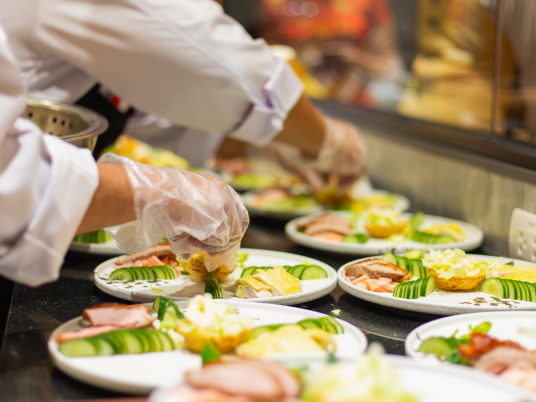
In professional culinary environments, high-quality ingredients are the foundation of every exceptional dish. Short plate beef hotel is more than just an ordinary cut of meat; it represents quality, craftsmanship, and dedication to creating the finest dining experiences for hotel guests. Its tender texture, natural savoriness, and versatility make this cut a favorite in many fine dining establishments.
When a hotel chooses a distributor such as Happy Farm Bali, it’s not merely purchasing ingredients—it’s building a strategic partnership that guarantees quality and reliability. The availability of high-grade short plate beef allows chefs to innovate continuously and craft new dishes that delight guests’ palates.
Conclusion: Happy Farm Bali, the Best Partner for Short Plate Beef Hotel
The demand for short plate beef hotel in Bali continues to rise alongside the expansion of the hotel and resort industry. This flavorful cut of meat has become an essential element in premium dishes served to both domestic and international travelers. To uphold world-class culinary standards, hotels need a distribution partner that not only provides high-quality products but also understands logistics and supply consistency.
Happy Farm Bali has proven itself as a trusted meat distributor that prioritizes quality, punctuality, and professional service. With a strong commitment to excellence and customer satisfaction, it has become the top choice for many hotels and resorts in Bali seeking to ensure that every meat dish served to guests meets the highest standards of taste and quality.
If you are looking for premium-quality short plate beef hotel with fast, safe, and freshness-guaranteed distribution, Happy Farm Bali is the best recommendation for your professional culinary needs.
Best Gianyar Meat Supplier: Happy Farm Bali
Gianyar Meat Supplier - In the world of culinary and food supply, choosing the right Gianyar Meat Supplier is an essential step to maintain taste, hygiene, and customer trust. In the Gianyar area, the demand for fresh meat continues to grow — from restaurants and hotels to catering services and households. The quality of meat not only determines flavor but also reflects professionalism and commitment to customer satisfaction.
Why Choosing the Right Meat Supplier Matters

For many culinary business owners, Best Gianyar Meat Supplier is more than just a provider of raw ingredients — they are a strategic partner who ensures consistency in taste and quality for every dish served. Fresh, hygienic, and properly distributed meat helps build a reliable brand reputation.
When selecting a meat supplier, several key factors should be considered:
- Product quality and freshness. The meat should come from trusted farms, processed under strict hygiene standards, and stored at ideal temperatures.
- Consistency of supply. Restaurants and hotels rely on a steady supply to avoid disruption in daily operations.
- Competitive pricing. A professional supplier provides stable prices despite market fluctuations.
- Professional service. Quick communication, punctual delivery, and flexible ordering options add great value.
- Legal certification. Licensed and certified Gianyar Meat Supplier guarantee compliance with food safety regulations.
Characteristics of a Reliable Gianyar Meat Supplier
A reputable Gianyar Meat Supplier can be identified by their handling process — from farm to delivery. Professional suppliers maintain hygienic cutting systems, cold storage facilities, and refrigerated transport to ensure freshness throughout the entire distribution chain.
They also apply traceability standards, meaning every meat product can be tracked back to its origin. This transparency provides customers with confidence, knowing their meat is sourced responsibly.
A quality Gianyar Meat Supplier usually offers a wide range of meat products — including beef, chicken, pork, and lamb. Some even provide processed items such as sausages, minced meat, and meatballs at hotel-grade quality. Having a single, reliable supplier for all meat needs saves both time and operational costs.
Distribution Process and Food Safety
The distribution process is a crucial stage in maintaining meat quality. A trusted Gianyar Meat Supplier must implement a well-maintained cold chain system, ensuring that meat remains at the correct temperature from the processing facility to the customer’s kitchen.
This system not only preserves freshness but also prevents bacterial growth that can compromise quality. For hotels and restaurants in Gianyar, food safety is non-negotiable since it directly affects guest satisfaction and brand reputation.
Professional suppliers regularly conduct laboratory tests to guarantee their products are free from harmful chemicals, antibiotics, or residues. As consumer awareness of healthy food increases, customers now prefer Gianyar Meat Supplier that offer safety, transparency, and guaranteed quality.
The Role of Gianyar Meat Supplier in Bali’s Culinary Industry
The presence of Gianyar Meat Supplier plays a vital role in Bali’s thriving culinary industry. Many restaurants, villas, and catering businesses depend on daily meat supply. Any disruption can lead to significant operational issues.
With the rapid growth of tourism and dining businesses in Gianyar, the need for professional meat suppliers continues to rise. Reliable suppliers must balance high demand with product quality, supported by strong logistics, organized inventory management, and responsive delivery teams.
Some Gianyar Meat Supplier are even adopting digital systems that allow customers to order directly through websites or apps — providing real-time pricing and flexible delivery schedules. This modernization proves that the meat supply industry in Gianyar is moving forward with technology.
Benefits of Partnering with a Professional Meat Supplier
Collaborating with a professional Gianyar Meat Supplier offers numerous benefits:
- Guaranteed freshness: Daily supply of fresh meat with strict quality control.
- Ease of ordering: Transparent and fast ordering systems.
- Timely delivery: Efficient logistics ensure business continuity.
- Stable pricing: Protects your operations from sudden market price changes.
- Responsive customer service: A team ready to support every client’s needs.
For both small and large-scale culinary businesses, these factors contribute directly to long-term success. A supplier’s reliability can be the foundation of a strong and consistent brand reputation.
Meat Demand and Market Potential in Gianyar
Gianyar is home to popular tourist destinations such as Ubud, surrounded by luxury villas, restaurants, and cafes. The demand for high-quality meat continues to increase, creating opportunities for Gianyar Meat Supplier to grow and expand their market.
Local consumers are also becoming more selective in choosing food sources. Awareness of clean and healthy eating habits drives them to purchase meat from trusted suppliers that prioritize quality and hygiene.
Furthermore, the rising number of catering services, restaurants, and coffee shops in Gianyar boosts the need for reliable Gianyar Meat Supplier who can provide not only daily supply but also long-term cooperation. This professional approach distinguishes trusted suppliers from ordinary ones.
The Best Gianyar Meat Supplier: From Farm to Table

Finding the best Gianyar Meat Supplier requires careful evaluation. Factors such as business legality, customer testimonials, product quality, and service consistency are crucial indicators. The best suppliers are those who educate their customers about proper meat storage and handling to maintain quality.
For any culinary business, choosing a transparent and professional supplier saves time, cost, and effort in the long run. A steady supply ensures smooth kitchen operations and consistent customer satisfaction.
Happy Farm Bali: Your Trusted Gianyar Meat Supplier
Among the leading names in the region, Happy Farm Bali stands out as a Trusted Meat Supplier. With years of experience in delivering high-quality fresh meat, Happy Farm Bali provides complete solutions for restaurants, hotels, catering services, and households.
Every product is handled through a temperature-controlled supply chain, processed under hygienic standards, and sourced from healthy, well-managed farms. With its commitment to quality, punctual delivery, and professional service, Happy Farm Bali has earned its reputation as one of the best Gianyar Meat Supplier available today.
Choosing the right Gianyar Meat Supplier is an essential investment for anyone who values quality, hygiene, and reliability. In a competitive food industry, fresh and high-quality meat is the foundation of every delicious meal. With trusted suppliers like Happy Farm Bali, the meat supply chain in Gianyar is now safer, more consistent, and more reliable than ever — helping both businesses and households enjoy the finest meat every day.
Happy Farm Bali: Trusted Salmon Fillet Horeca
Salmon Fillet Horeca - Salmon is one of the premium fish varieties known for its high nutritional value and exceptional taste. Worldwide, salmon is recognized as a nutritious food source, rich in omega-3 fatty acids, high-quality protein, as well as essential vitamins and minerals that support overall health. In Indonesia, demand for salmon continues to rise, in line with the growth of healthy lifestyle trends and the popularity of Japanese and Western cuisines that use salmon as a main ingredient. The uniqueness of salmon lies not only in its taste but also in its versatility—it can be prepared in countless ways, from sashimi and sushi to grilled steaks and modern fusion dishes.
Within the Horeca (Hotel, Restaurant, and Catering) industry, salmon plays an essential role. Guests at five-star hotels or high-end restaurants often seek dining experiences that are different from everyday meals. Salmon fillet is among the top choices because it represents quality and prestige. Offering salmon-based dishes, whether raw or cooked, often determines the level of guest satisfaction. This is why a consistent supply of salmon fillet Horeca—fresh and premium in quality—is a must-have in the world of premium culinary businesses.
Salmon distribution itself is far from simple. Since salmon is not locally sourced in Indonesia, the majority of supply depends on imports from leading producers such as Norway, Scotland, and Chile. Its global distribution requires strict handling procedures, from cold storage and cold-chain transportation to hygienic packaging, to maintain its freshness. In the Horeca business, professional salmon distribution ensures restaurants and hotels can consistently deliver their best menus without compromising quality. This is why trusted distributors play a vital role in sustaining the salmon fillet supply chain for Indonesia’s market.
Salmon Fillet Horeca and Its Importance in the Culinary Industry

Salmon fillet Horeca is not just a ready-to-cook fish cut, but also a symbol of high culinary standards. Salmon fillets specifically supplied for Horeca are usually of premium quality, with uniform size and thickness, making them easier for chefs to process. Consistency matters because restaurants and hotels need ingredients that are not only delicious but also stable in presentation.
The quality of salmon used in Horeca is strongly tied to a business’s branding and reputation. Restaurants that consistently serve fresh salmon with authentic flavors earn customer trust and gain a competitive edge. In many cases, a hotel or restaurant’s ability to serve outstanding salmon dishes even contributes to positive ratings and online reviews.
Meanwhile, the rise of health-conscious lifestyles also drives higher salmon consumption in Indonesia. Guests at hotels and restaurants are increasingly selective, preferring meals that are both delicious and nutritious. Salmon, with its rich omega-3 fatty acids, is believed to promote heart, brain, and immune health. This makes salmon fillet Horeca one of the most sought-after ingredients among professional chefs and modern consumers alike.
Challenges in Salmon Distribution for Horeca
Ensuring a reliable salmon supply for Horeca is no easy task. The challenges include logistics, stock availability, and timely delivery. Because salmon is mostly imported, the supply chain must undergo several steps: quality inspections, cold storage, and specialized transport.
If any of these stages are compromised, the salmon’s freshness will quickly deteriorate, affecting texture, aroma, and flavor, ultimately harming hotels and restaurants. That’s why Horeca businesses require distributors who can guarantee quality from import to final delivery.
Price stability also plays a critical role. Professional distributors are usually able to offer consistent pricing despite fluctuations in the global market. This allows Horeca businesses to plan their menus and costs more effectively.
Happy Farm Bali: The Solution for Salmon Fillet Horeca
Amid the growing demand for premium salmon fillets, Happy Farm Bali has emerged as a trusted supplier and distributor in Indonesia, particularly in the Bali area. The brand has long been committed to providing salmon fillet Horeca with international standards, tailored to the needs of hotels, restaurants, and catering businesses.
Happy Farm Bali understands that consistency in quality is the most crucial factor in the premium culinary industry. That’s why the company ensures its supply chain is fully supported by a guaranteed cold chain system. From storage and packaging to delivery, every process is handled with strict hygiene standards to maintain freshness.
For Horeca businesses in Bali, Happy Farm Bali offers more than just fresh salmon fillets—it provides reliable partnership support that ensures smooth operations. With a professional distribution network, Happy Farm Bali guarantees that every order arrives on time and in top condition.
Advantages of Happy Farm Bali in Supplying Salmon Fillet Horeca
- Guaranteed Premium Quality
Happy Farm Bali consistently delivers salmon fillets that meet Horeca standards, with uniform cuts, fresh meat, and contamination-free handling. - On-Time Distribution
Supported by a dependable logistics system, orders of salmon fillet Horeca always arrive as scheduled, ensuring smooth hotel and restaurant operations. - Competitive Pricing
Despite offering premium products, Happy Farm Bali provides competitive prices, helping Horeca businesses maintain profitability. - Professional Service
The Happy Farm Bali team offers excellent service and consultation to customers, from ordering to delivery.
Recommendations for Horeca Businesses

For those engaged in the hotel, restaurant, or catering industry, choosing a trusted salmon distributor is essential to maintaining quality. Never risk your restaurant’s reputation with subpar or delayed ingredients. By choosing Happy Farm Bali, you’re not only ensuring access to premium salmon fillet Horeca but also building a long-term, beneficial partnership.
Happy Farm Bali has already proven itself as one of the most reliable salmon distributors in Bali, with a strong track record and an excellent reputation among culinary businesses. If your goal is to deliver premium dining experiences, then Happy Farm Bali is the right partner to support your supply needs.
Salmon is more than just a premium fish—it is an essential part of modern culinary businesses. In the Horeca industry, premium salmon fillet Horeca enhances menu appeal and strengthens the image of restaurants and hotels. Yet, all of this is only possible with the support of a professional and trusted distributor.
As a leading supplier of salmon fillet Horeca in Indonesia, particularly Bali, Happy Farm Bali has proven its commitment to delivering premium products with excellent service. By choosing Happy Farm Bali, Horeca businesses can focus on menu creation and customer satisfaction without worrying about ingredient quality.
If you want to offer the very best to your hotel guests and restaurant visitors, entrust your salmon fillet Horeca needs to Happy Farm Bali—your trusted partner for premium culinary excellence.
Horeca Trout Supplier for 5-Star Hotels and Restaurants
Horeca Trout Supplier - The culinary industry continues to grow along with the increasing demand from consumers for high-quality dining experiences. One ingredient that is becoming increasingly popular among five-star hotels and restaurants is trout. This fish has a distinctive flavor, tender meat texture, and high nutritional value, making it an ideal choice for a variety of premium dishes. In the world of Horeca (Hotel, Restaurant, and Catering), the quality of raw ingredients is a key factor in ensuring customer satisfaction. Therefore, the presence of a trusted Horeca Salmon Trout Supplier is crucial to maintaining consistent culinary standards.
Understanding Trout and Its Uniqueness
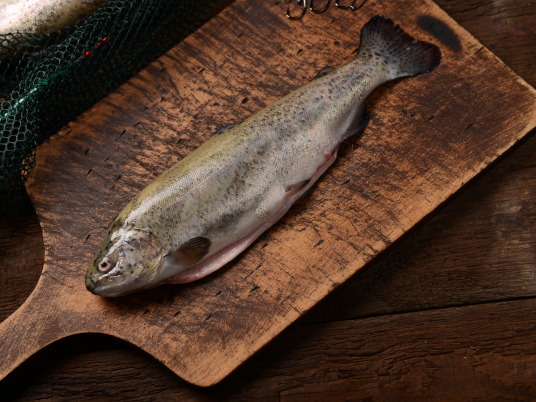
Trout is a type of freshwater fish closely related to salmon. Its natural habitat lies in clear and cold waters, which allow the fish to grow with reddish-colored flesh that is rich in protein and omega-3. The delicate and naturally savory flavor of trout makes it a favorite ingredient among professional chefs, especially in fine dining menus.
Unlike many local fish, trout has a smooth meat texture with a light aroma, making it versatile for various cooking techniques—from grilling and smoking to being served raw as sashimi. It’s no wonder that demand for fresh trout continues to rise, particularly among five-star hotels that always strive to deliver exclusive menu options for their guests.
The Importance of a Horeca Trout Supplier in the Culinary Industry
The Horeca industry is a sector that heavily depends on ingredient quality and consistency. Five-star hotels and restaurants do not just serve food; they offer a luxury dining experience that must meet high expectations. In this context, the role of a reliable Horeca Trout Supplier is vital for:
- Ensuring Premium Quality
Horeca Trout supplied must meet high standards in terms of freshness and farming practices. Trusted suppliers typically follow strict cultivation methods to ensure the fish is free from harmful chemicals. - Consistent Supply
Five-star restaurants cannot rely on inconsistent deliveries. Reliable suppliers guarantee routine distribution so that trout stock is always available for daily menus and special events. - Operational Efficiency
By working with dedicated Horeca suppliers, hotels and restaurants no longer need to deal with complex logistics or storage issues. This allows chefs and kitchen teams to focus on culinary creativity. - Food Safety
Experienced suppliers always comply with international food safety standards. From handling to packaging and distribution, everything is done hygienically, ensuring hotels and restaurants receive trout of the highest quality.
Challenges in Providing Trout for Horeca
Despite the high demand, horeca trout supplier is not without challenges. Weather conditions, water quality, and delivery logistics can all pose difficulties. In addition, sustainability trends are increasingly emphasized. Five-star restaurants are becoming more selective in choosing suppliers who not only guarantee quality but also implement eco-friendly and sustainable practices.
This is why local suppliers who can overcome these challenges provide the best solution. Local sourcing often ensures faster delivery, keeping the trout fresh by the time it arrives in the restaurant kitchen.
Horeca Trout Suppliers and 5-Star Hotel Standards
Five-star hotels have strict standards in every aspect of their operations, including food ingredients. Trout supplied must meet the following criteria:
- High-Level Freshness: Fish must be delivered in the best condition, often directly after harvest.
- Consistent Taste and Texture: Trout must retain the same quality every time it is served.
- Health Certification: Suppliers must have official licenses and recognized food safety certifications.
- Product Availability: A stable supply is essential to prevent kitchen operations from being disrupted.
With such high standards, not every supplier is capable of meeting Horeca demands, especially those of five-star hotels whose reputation depends heavily on the quality of their dishes.
Happy Farm Bali: The Best Salmon Trout Supplier in Bali

As an international tourist destination, Bali is renowned for its luxury and world-class culinary industry. Many five-star hotels and restaurants in Bali require a steady supply of premium trout. One name that has earned a strong reputation as the best Horeca Trout Supplier is Happy Farm Bali.
Happy Farm Bali provides a solution for the premium culinary industry by supplying high-quality trout and salmon trout. Its strengths include:
- International Farming Standards: Happy Farm Bali uses modern, eco-friendly, and sustainable aquaculture systems.
- Maximum Freshness: Distribution is carried out quickly and precisely, ensuring the fish remains fresh when it reaches hotel or restaurant kitchens.
- Premium Quality: Each trout offers delicate meat texture and authentic flavor that meet international culinary standards.
- Trusted Horeca Partner: Happy Farm Bali is a recognized supplier to various five-star hotels and fine dining restaurants in Bali, proving its credibility and consistency.
Horeca Trout Suppliers Conclusion
In the Horeca industry, ingredient quality is the key to delivering the best dining experiences for guests. Trout, with its delicious taste and rich nutrition, has become a favorite in five-star kitchens. The presence of a reliable Horeca Trout Supplier plays a decisive role in ensuring smooth operations and maintaining brand reputation.
For Horeca businesses in Bali, Happy Farm Bali stands out as the ideal partner. With international standards, guaranteed freshness, and a commitment to sustainability, Happy Farm Bali rightfully earns its place as the best Salmon Trout Supplier in Bali. Supported by such a supplier, five-star hotels and restaurants can continue to deliver exceptional dishes that captivate both the palate and the heart of every guest.
No.1 Supplier Horeca for High-Quality Restaurants & Hotels
This country is not only a world-renowned tourist destination famous for its natural beauty and cultural richness but also a growing hub for the culinary and hospitality industries. With the rising number of restaurants, hotels, and cafés, the demand for high-quality ingredients has never been greater. From premium beef, fresh salmon, to a wide variety of seafood, these elements are essential to maintaining the culinary standards expected in Indonesia. This is where the role of a Supplier Horeca becomes crucial, ensuring that hotels, restaurants, and culinary businesses consistently deliver top-notch dishes that meet international standards.
The Importance of Horeca Suppliers
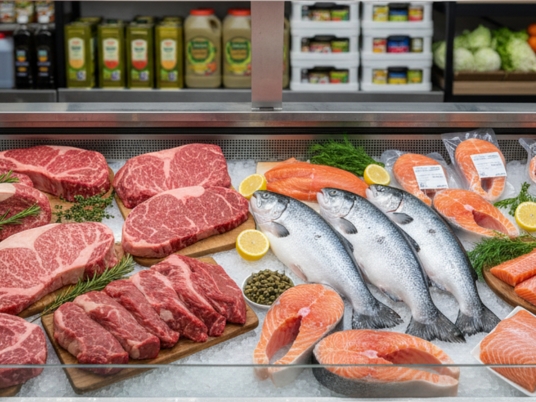
The hospitality and restaurant industries in rely heavily on consistent ingredient supplies. Without the support of a reliable Supplier Horeca, it would be challenging for any establishment to maintain quality, flavor, and presentation. Reliable supply is not just about quantity—it’s about quality, timely delivery, and ensuring that every product arrives fresh and safe to consume.
Professional suppliers understand the unique requirements of the horeca (hotel, restaurant, café) sector. This includes specific cuts of premium wagyu beef, fresh salmon delivered under controlled cold-chain conditions, and a wide selection of both local and imported seafood. Such demands can only be met by suppliers with strong expertise and a well-established distribution system.
Premium Beef for Culinary Excellence
Indonesia is home to many fine dining establishments that highlight dishes such as steaks, barbeques, and other beef-based specialties. As a result, the demand for premium beef—such as wagyu, angus, and high-grade local beef—is consistently high.
A Supplier Horeca plays a vital role in providing a range of beef options that restaurants can align with their target market. Beyond imports, reputable suppliers also collaborate with local farmers to ensure a sustainable supply of fresh meat. This consistency allows chefs to create dishes that not only taste outstanding but also maintain texture and flavor uniformity, critical for guest satisfaction.
Fresh Salmon, a Modern Menu Essential
Salmon has become a favorite in many restaurants, featured in dishes like sashimi, sushi, poke bowls, and grilled entrées. The greatest challenge in supplying salmon lies in maintaining its freshness from shipment to the restaurant kitchen.
A reliable Supplier Horeca invests in cold chain systems to ensure salmon remains in pristine condition. This is essential, as even the slightest mishandling can compromise quality or pose health risks. With consistent deliveries of fresh salmon, Bali’s restaurants can confidently serve international-standard dishes that delight travelers from across the globe.
Fresh Seafood, Bali’s Culinary Strength
Blessed with rich marine resources, Bali offers an abundance of seafood—ranging from prawns, crabs, lobsters, squid, to a variety of fresh fish. It’s no surprise that seafood has become a cornerstone of the island’s culinary identity. However, the high demand requires professional handling to prevent shortages or quality degradation.
A trusted Supplier Horeca Bali provides both local and imported seafood, delivered with care to preserve authentic taste and freshness. This enables chefs to innovate across menus, from seafood grills and pasta to traditional Balinese dishes rich in spices. Reliable suppliers ensure that the island’s culinary scene continues to thrive with diversity and excellence.
Challenges in Choosing a Supplier Horeca Bali
While many distributors operate in Bali, not all meet the stringent requirements of the horeca industry. Common challenges faced by businesses include:
- Inconsistent quality – Products may vary between deliveries.
- Unreliable delivery schedules – Late shipments can disrupt operations.
- Limited product range – Restaurants often require diverse ingredients for complex menus.
- Lack of professional support – Premium suppliers typically also provide product consultations, menu recommendations, and after-sales service.
Therefore, selecting a supplier goes beyond price—it requires evaluating credibility, experience, and reliability.
Trusted Supplier Horeca
 In Bali’s highly competitive culinary landscape, having a dependable supplier is a long-term investment. Among the most trusted names is Happy Farm.
In Bali’s highly competitive culinary landscape, having a dependable supplier is a long-term investment. Among the most trusted names is Happy Farm.
Happy Farm Bali has earned recognition as a Supplier Horeca that restaurants, hotels, and cafés can rely on. With expertise in distributing premium beef, fresh salmon, and high-quality seafood, the brand understands the elevated standards of the culinary industry. Beyond quality, Happy Farm Bali emphasizes a professional distribution system that ensures products reach clients in optimal condition.
Why Choose Happy Farm Bali as Your Horeca Supplier
Several key strengths make Happy Farm Bali a top choice:
- Premium Product Quality: From beef to salmon and seafood, every item undergoes strict selection.
- Professional Distribution: Supported by a cold chain system to maintain freshness.
- Wide Product Range: Offering a complete selection for restaurants, hotels, and cafés.
- Responsive Service: A dedicated team ready to assist with client needs.
- Trusted Partnerships: Widely chosen by leading culinary businesses in Bali.
With these advantages, Happy Farm Bali is more than just a supplier—it is a strategic partner that supports the success of Bali’s hospitality and culinary industries.
A Supplier Horeca plays a pivotal role in maintaining the high standards of the island’s vibrant food and hospitality sector. From premium beef and fresh salmon to a wide array of seafood, every ingredient requires professional handling to ensure quality and consistency. For restaurants and hotels aiming to uphold their reputation and guest satisfaction, choosing a trusted supplier in Indonesia is a strategic necessity.
Among the many options available, Happy Farm Bali stands out as a highly recommended supplier. With premium products, professional distribution, and consistent service, Happy Farm Bali has become a trusted partner that strengthens the culinary excellence of Bali’s hospitality industry.
Happy Farm Bali: Horeca Food Supplier
Horeca Food Supplier - Bali is globally recognized as one of the top tourist destinations, home to thousands of hotels, resorts, villas, and restaurants catering to travelers from every corner of the world. With the rapid growth of the hospitality industry, the demand for premium food ingredients has also increased significantly. From five-star hotels to fine dining restaurants and modern cafés, each establishment requires a reliable Horeca Food Supplier that can consistently deliver premium beef, fresh salmon, and high-quality seafood.
Speed, service excellence, and guaranteed availability are the keys to why a supplier can be considered number one in Bali. Among the many players in the industry, Happy Farm Bali has proven itself as a trusted partner, ensuring the highest quality products and services for Horeca businesses across the island.
The Importance of a Horeca Food Supplier in Bali

As a world-class tourism hub, Bali does not only showcase its beaches, culture, and luxury accommodations but also its culinary excellence. Hotels and restaurants must deliver dishes that meet international standards and satisfy both local and foreign guests. To achieve this, they rely heavily on a dependable Horeca Food Supplier.
A supplier’s role goes far beyond simply delivering products. They must maintain consistent quality, ensure timely deliveries, and provide a wide selection of premium ingredients. For instance, premium beef must be tender, flavorful, and meet international grading standards. Salmon should always arrive fresh, rich in nutrients, and safe for consumption. Similarly, seafood such as shrimp, crabs, and lobsters must be handled with care to preserve their natural taste and freshness.
Without the support of a trustworthy supplier, it would be nearly impossible for hotels and restaurants to keep their menus consistent, especially during peak tourist seasons or large-scale events.
Premium Beef for the Hospitality Industry
Beef is one of the most essential ingredients in the Horeca sector. Whether for steaks, burgers, or fusion dishes, the quality of beef directly influences the final outcome of a meal. A reliable Horeca Food Supplier must offer premium beef with the perfect marbling, superior texture, and authentic taste.
Happy Farm Bali understands this demand and provides carefully selected premium beef from trusted sources. Every cut is processed with strict attention to freshness and storage quality. With a well-maintained supply chain, chefs across Bali can rely on consistently high-quality beef to deliver outstanding culinary creations.
Fresh Salmon for Hotels and Restaurants
Salmon is one of the most sought-after ingredients, particularly for menus such as sushi, sashimi, and Western-style dishes. The growing trend of healthy dining has also increased the demand for salmon as it is rich in protein and omega-3 fatty acids.
As a Trusted Horeca Food Supplier, Happy Farm Bali ensures salmon arrives in excellent condition. Using strict cold chain distribution systems, they maintain freshness from source to kitchen. This commitment allows hotels and restaurants to confidently serve dishes with salmon that meet international culinary standards.
Premium Seafood: A Tourist Favorite
Beyond beef and salmon, seafood plays a central role in Bali’s hospitality industry. International tourists often seek tropical seafood dining experiences, making dishes such as grilled lobster, prawns, and clams among the most popular choices.
Happy Farm Bali offers a wide selection of seafood with guaranteed freshness and premium quality. Each product is carefully sourced and inspected to ensure only the best reaches their Horeca partners. As a result, hotels and restaurants can serve flavorful, nutrient-rich seafood dishes that leave lasting impressions on their guests.
Service Excellence: The Key to Trust
While product quality is crucial, exceptional service is what builds long-term trust. In the Horeca industry, time is invaluable. Delayed deliveries can directly disrupt restaurant operations or hotel dining services. That’s why a Horeca Food Supplier that prioritizes speed, accuracy, and reliability will always stand out.
Happy Farm Bali has built its reputation not only on product quality but also on professional customer service. With a responsive team, modern distribution systems, and a commitment to punctuality, they continue to be a reliable partner for Horeca businesses in Bali.
Consistent Availability of Ingredients
One of the biggest challenges in the Horeca industry is ensuring the consistent availability of ingredients. Demand can surge unexpectedly during holiday seasons or international events in Bali. A supplier that fails to secure stock risks disrupting hotel and restaurant operations.
Happy Farm Bali addresses this challenge with a strong and stable supply chain. By partnering with trusted sources and maintaining reliable logistics, they guarantee steady supplies of premium beef, salmon, and seafood. This consistency is one of the main reasons why Happy Farm Bali is recognized as a top Horeca Food Supplier on the island.
Why Happy Farm Bali is Number One

Earning the reputation as the number one Horeca Food Supplier in Bali did not happen overnight. Happy Farm Bali has achieved this position through a balanced combination of premium products, outstanding service, and dependable availability. Many renowned hotels and restaurants have chosen them as their primary supplier because of their proven reliability and international-standard quality.
Furthermore, Happy Farm Bali continuously adapts to market trends and client needs. They are not just a supplier, but also a strategic partner that helps Horeca businesses create the best culinary experiences possible.
Recommendations for Horeca Businesses in Bali
For hotel, restaurant, and café owners in Bali, choosing a supplier is not just a logistical decision—it is a long-term business strategy. The right supplier helps maintain consistent quality, optimize operations, and ensure guest satisfaction.
With its proven track record, reputation, and dedication, Happy Farm Bali is the leading recommendation for anyone seeking a trusted Horeca Beef Supplier in Bali. They offer more than premium products—they provide peace of mind with reliable service that supports business growth.
In Bali’s highly competitive Horeca industry, the presence of a dependable food supplier is essential for maintaining world-class culinary standards. Premium beef, fresh salmon, and high-quality seafood are core ingredients that must always be available in top condition. Service excellence and consistent supply are what separate the best suppliers from the rest.
Happy Farm Bali has firmly established itself as Bali’s number one Horeca Food Supplier. With premium ingredients, professional service, and reliable logistics, they are the go-to partner for hotels and restaurants seeking to deliver the finest dining experiences on the island.
Wagyu Beef Supplier with the Best Hospitality in Bali
Wagyu Beef Supplier - In recent years, the demand for premium beef in Indonesia has grown significantly, particularly in world-class tourist destinations such as Bali. Travelers are not only seeking stunning beaches and rich culture but also unforgettable dining experiences. Among the many options of premium meats, Wagyu beef has become the star of the culinary scene thanks to its exceptional taste, texture, and nutritional value.
With the rising demand, the role of a reliable Wagyu Beef Supplier in Bali has become increasingly important. Hotels, fine dining restaurants, and luxury catering services depend heavily on trusted suppliers to deliver consistently high-quality products that meet international standards.
This article explores why Wagyu beef is so special, the crucial role suppliers play in Bali, the types of Wagyu cuts offered, and practical tips for choosing the right supplier. In the final section, you will also find a recommendation for a brand that has earned its reputation for delivering the best Wagyu beef in Bali.
Why Choose Wagyu Beef?

Wagyu beef is not just ordinary beef. The word “Wagyu” itself comes from Japan, meaning “Japanese cow.” Its defining feature lies in the extraordinary level of marbling—or intramuscular fat—that is finely distributed throughout the meat. This marbling is what gives Wagyu its buttery flavor, melt-in-the-mouth texture, and unique aroma that sets it apart from any other beef.
Beyond taste, Wagyu beef is also valued for its nutritional benefits. The fat in Wagyu contains a higher percentage of monounsaturated fats and omega-3 fatty acids, which are healthier for the heart compared to other types of beef. This makes Wagyu not only a gourmet choice but also a healthier one when consumed in moderation.
In Bali’s culinary scene, Wagyu beef has become a standard of excellence. Fine dining restaurants, five-star hotels, and luxury villas regularly feature Wagyu on their menus to impress both domestic and international guests. Choosing Wagyu is not only about serving food—it is about elevating lifestyle and dining standards.
The Crucial Role of a Wagyu Beef Supplier in Bali
Bali’s thriving culinary industry is fueled by an influx of global tourists with high expectations. Restaurants, hotels, and catering businesses must maintain international standards, and the quality of ingredients plays a major role. A Wagyu Beef Supplier in Bali serves as a vital partner in this ecosystem, ensuring that businesses have access to premium beef consistently.
Suppliers do far more than just deliver meat. They guarantee quality, freshness, and authenticity—three elements that are non-negotiable in the premium dining sector. For example, a restaurant aiming to serve A5-grade Wagyu must rely on a supplier capable of sourcing certified, authentic cuts and distributing them under strict cold-chain conditions.
Furthermore, suppliers act as the bridge between global producers and local businesses. They handle import processes, food safety standards, and stock availability, ensuring that Wagyu products are always ready to meet the demands of Bali’s bustling culinary scene. Without reliable suppliers, it would be difficult for chefs and restaurateurs to consistently maintain the quality their guests expect.
Varieties of Wagyu Beef Cuts Offered
A trustworthy Wagyu Beef Supplier typically provides a wide range of cuts to accommodate different culinary needs. Each cut carries unique characteristics suited for specific cooking methods.
- Ribeye: Known for its rich marbling and bold flavor, ribeye is the most popular choice for premium steaks, offering an indulgent eating experience.
- Tenderloin: Famous for its buttery tenderness and fine texture, tenderloin is often featured in elegant fine dining dishes.
- Sirloin: A well-balanced cut that combines tenderness with a strong beefy flavor, making it versatile for both Western and Asian-style cooking.
- Brisket: With its thicker fat layers, brisket is ideal for slow cooking, barbecues, or hearty soups.
- Short Ribs: A favorite for braised or grilled dishes, short ribs deliver a perfect blend of savory richness and chewy texture.
By offering such variety, suppliers empower chefs to unleash their creativity and design unique menus that cater to diverse clientele. Availability of multiple grades—from A3 to A5—further highlights the professionalism of a Wagyu supplier in Bali.
Service Standards of the Best Wagyu Beef Supplier
When it comes to choosing a supplier, service is just as important as the product itself. The best wagyu beef suppliers in Bali distinguish themselves through a set of high service standards that ensure client satisfaction.
Firstly, they provide consultation services. Not all customers are familiar with the best cuts for their menus, so expert guidance from suppliers helps businesses choose the right products.
Secondly, they use modern packaging methods, such as vacuum-sealed packs, to preserve freshness, prevent contamination, and extend shelf life.
Thirdly, they maintain professional distribution systems supported by refrigerated fleets. This ensures that Wagyu beef remains in perfect condition during transport, from warehouse to kitchen.
Consistency of supply is another vital aspect. Reliable suppliers guarantee sustainable availability, preventing stock shortages that could disrupt restaurant operations.
Lastly, the best suppliers emphasize transparent pricing. Clear and competitive pricing builds trust and eliminates hidden costs, allowing businesses to plan their budgets confidently.
Tips for Choosing a Wagyu Beef Supplier in Bali
Selecting the right wagyu beef supplier is a strategic decision for any culinary business. Here are some practical tips to guide you:
- Check Reputation: Look for reviews and testimonials from other clients. A reputable supplier consistently delivers quality and reliable service.
- Verify Certifications: Ensure the Wagyu beef offered comes with proper import and food safety documentation. Authenticity is critical.
- Request Samples: Before committing long-term, test product samples to evaluate taste, texture, and freshness.
- Explore Product Range: Professional suppliers typically offer multiple grades and cuts, allowing you to customize your menu offerings.
- Assess After-Sales Support: Choose suppliers who offer post-purchase support, such as quality guarantees, consultations, or flexible delivery services.
By applying these criteria, businesses in Bali can minimize risk and ensure a reliable partnership that supports long-term success.
Recommended Wagyu Beef Supplier with the Best Service in Bali

After considering the above factors, one of the most recommended options is Happy Farm Bali. This brand has built a strong reputation among fine dining restaurants, international hotels, and luxury villas for its consistency and excellent service.
Key advantages of this supplier include:
- Offering Wagyu beef ranging from A3 to A5 grade, imported directly from Japan and Australia.
- Operating with a modern distribution system, including refrigerated fleets that preserve product quality.
- Providing expert consultations to chefs and restaurant owners in selecting the right cuts for their menus.
- Maintaining transparent and competitive pricing.
- Earning positive reviews from numerous satisfied clients in Bali’s premium culinary industry.
With such qualities, this Wagyu Beef Supplier stands out as an ideal partner for businesses aiming to deliver world-class dining experiences in Bali.
Conclusion
Wagyu beef represents the pinnacle of culinary excellence. In Bali, where the hospitality industry thrives on international standards, partnering with a reliable The Best Wagyu Beef Supplier is essential for restaurants, hotels, and catering businesses. Suppliers do not merely deliver products—they play a strategic role in ensuring consistency, authenticity, and quality.
Choosing the right supplier goes beyond price; it requires attention to service standards, product variety, certifications, and reputation. By securing a trustworthy partner, businesses can confidently deliver premium dining experiences that satisfy discerning guests from around the globe.
For those seeking to elevate their culinary offerings, trusting a Wagyu Beef Supplier with the best service in Bali is a smart step toward growth, reputation, and long-term success.
Bali Salmon Fillet: Top Product from Happy Farm Bali
Bali Salmon Fillet - Salmon is one of the most popular fish worldwide, known for its vibrant orange to pink flesh, distinctive taste, and exceptional nutritional value. This fish is rich in protein, omega-3 fatty acids, vitamin D, vitamin B12, and essential minerals such as selenium and potassium. It is no surprise that salmon has become a top choice for those who prioritize a healthy lifestyle and nutritious meals.
Beyond its health benefits, salmon is highly versatile in cooking. It can be enjoyed raw as sashimi, grilled as a steak, or incorporated into soups and fusion dishes. Its delicate texture and naturally savory flavor make it a favorite across different age groups, from children to adults.
The Rising Trend of Salmon Consumption in Indonesia
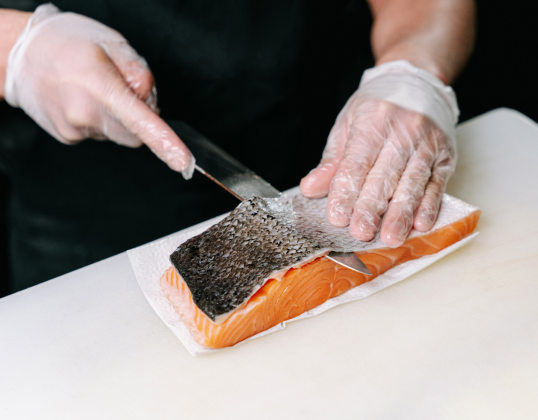
In recent years, salmon consumption in Indonesia has seen significant growth. This is driven by the rise of healthy eating trends, greater awareness of high-quality protein intake, and the increasing number of Japanese and fusion restaurants that feature salmon as a key ingredient.
Importantly, not all salmon consumed in Indonesia comes from overseas. Today, there are trusted local producers offering premium-quality salmon that meets international standards. The availability of locally produced salmon, especially in fillet form, ensures consumers can enjoy fresher products at more affordable prices.
What is a Salmon Fillet?
A salmon fillet product refers to a cut of salmon that has been carefully separated from its bones and skin. This is the most convenient form of salmon, ready to cook without requiring extensive preparation. Fillets are typically packaged fresh or frozen, maintaining their nutritional value and freshness.
The main advantage of a salmon fillet is its practicality. Consumers can easily prepare it into a wide range of dishes such as baked salmon, grilled salmon with lemon seasoning, or even traditional recipes with a modern twist. The thick, tender texture of fillets makes them highly favored by households and restaurants alike.
Benefits of Consuming Bali Salmon Fillet
Particularly in Bali, salmon fillets are a popular choice, especially among international visitors who are accustomed to including salmon in their diets. Bali Salmon Fillet offers various health benefits, including:
- High-Quality Protein Source
Bali salmon fillet provides complete protein essential for muscle growth, tissue repair, and maintaining an active metabolism. - Rich in Omega-3 Fatty Acids
The omega-3 content in salmon fillets helps promote heart health, reduce inflammation, and improve brain function. - Supports Healthy Skin and Hair
Nutrients such as vitamin D, B12, and selenium found in salmon contribute to glowing skin, strong hair, and overall vitality. - Convenient and Versatile
Since it comes in fillet form, salmon is easy to prepare for a variety of dishes, whether simple home cooking or gourmet restaurant menus.
Advantages of Bali Salmon Fillet Compared to Imported Products
Locally produced Bali Salmon Fillet offers several advantages over imported alternatives:
- Guaranteed Freshness: Locally sourced salmon does not go through long shipping times, ensuring superior freshness and quality.
- More Competitive Pricing: Without high import costs, Bali salmon fillet is more budget-friendly.
- Support for Local Producers: Choosing Bali salmon fillet helps support the local fishery industry and improves the livelihood of farmers and fishermen.
Happy Farm Bali: Trusted Supplier of Premium Bali Salmon Fillet

One of the most trusted names providing Bali Salmon Fillet is Happy Farm Bali. The brand has built a strong reputation for delivering premium-quality salmon fillets with strict hygiene and food safety standards.
Happy Farm Bali ensures that its products are:
- Fresh and Hygienic: Processed with modern standards to guarantee safety, cleanliness, and natural freshness.
- Premium Quality: Fillets are cut with precision, resulting in thick, tender portions rich in nutrients.
- Easily Accessible: With a reliable distribution system, Happy Farm Bali makes it convenient for households, restaurants, and hotels to access fresh salmon fillets.
Recommendation: Choose Bali Salmon Fillet from Happy Farm Bali
If you are looking for fresh, nutritious, and premium-quality salmon in Trusted Salmon Supplier in Bali, Happy Farm Bali is the perfect choice. Their Bali Salmon Fillet not only offers exceptional taste but also delivers outstanding health benefits. By consuming locally produced salmon, you are not only enhancing your well-being but also supporting the growth of Indonesia’s local food industry.
With all these advantages, there is no reason to hesitate. Make Bali Salmon Fillet your top choice in the kitchen, and trust Happy Farm Bali for a healthy and delicious culinary experience.
Beef in Bali Commodity vs Bali Cultural Values
Bali is not only known as a world-class tourism destination with its stunning beaches, terraced rice fields, and exotic cultural charm. The island also has a wealth of culinary and food commodities that reflect social, economic, and traditional life that are still highly respected today. One of the most important commodities in daily life is beef in Bali. The beef products circulating in Bali are not only viewed as mere food ingredients but also carry a philosophical meaning closely tied to traditional ceremonies, cultural practices, and the identity of the local people affectionately called Bli.
This article will discuss how Bali beefs is present in both modern and traditional markets, its role within the cultural system of society, and how consumers can choose a trusted distributor. The discussion flows descriptively, touching on social, economic, and spiritual aspects, giving readers a complete picture of this essential food commodity on the Island of the Gods.
Beef in Bali Market in Daily Life
For Balinese people, beef is not only a dietary need but also part of the local economic pulse. In traditional markets scattered across villages, beef products are always the top choice, whether for daily meals or preparations for ceremonial events. The fresh color, chewy texture, and distinctive aroma make this product favored by housewives, food vendors, and modern restaurants alike.
In modern markets, the demand for beef in Bali continues to grow, especially with the expansion of the tourism sector. Restaurants, hotels, and cafés serving both Indonesian and international cuisine require large amounts of beef supply. Here, the role of distributors becomes vital to ensure quality meat remains fresh, hygienic, and meets high food safety standards.
Yet, the attraction of beef in Bali does not stop at the kitchen. More than that, this commodity becomes a medium that connects consumption needs with cultural heritage rich in meaning.
Beef in Bali in the Perspective of Tradition and Culture

Balinese tradition has immense influence in shaping social order. Almost every life aspect—from birth, marriage, to death—is accompanied by traditional ceremonies. In these ceremonies, Bali beefs often appears as both a symbol of offerings and communal consumption.
For example, in several major ceremonies, beef is used for special dishes involving extended family and the banjar community. The meat is not only cooked but also symbolizes togetherness, mutual cooperation, and respect for ancestors. The presence of Bali beef products in this cultural context is not just food but also a symbol of prosperity and gratitude for life’s blessings.
The Bli cultural values also teach balance between humans, nature, and spirituality. Within this framework, beef is treated with respect, not merely viewed as an economic commodity. This makes beef in Bali carry a dual meaning: as a source of nutrition and as part of a sacred cultural expression.
Transformation of Beef Products in Bali
Over time, the consumption of beef in Bali has undergone significant transformation. In the past, people relied more on traditional markets, where slaughtering was done directly and transparently. Today, many consumers turn to modern and official distributors offering more hygienic, efficient, and standardized products.
This change cannot be separated from the demands of tourism, which requires premium quality. International visitors to Bali bring global consumption standards, so the supply of beef in Bali must be competitive in terms of cleanliness, taste, and safety. This is what drives the rise of distributors applying cold storage systems, vacuum packaging, and fast delivery to maintain freshness.
Nevertheless, even as modernization progresses, cultural values remain preserved. Bali beef products must still align with local cultural philosophy. Many food businesses in Bali strive to maintain this balance: adhering to international standards while honoring living traditions.
Economic Value of Beef in Bali
Undeniably, beef also drives Bali’s economy. High demand, both from locals and the tourism sector, makes this product strategically valuable. Small traders in markets, slaughterhouses, and large distributors all benefit economically from the beef supply chain.
The price of Bali beefs often fluctuates depending on cultural events and religious holidays. During certain ceremonial seasons, demand can spike drastically, leading to significant price increases. This phenomenon illustrates how culture and economy are closely intertwined in Bali’s food context.
In addition, the existence of official distributors providing high-quality products contributes positively to the local economy. Proper distribution ensures not only consumer satisfaction but also fair income for local farmers.
Challenges in Bali Beef Distribution
Although demand for beef in Bali remains stable, distribution faces several challenges:
- Quality and Hygiene
Consumers are increasingly selective, seeking fresh, chemical-free meat processed under safe storage conditions. - Fluctuating Prices
Cultural factors, ceremonial seasons, and tourism demand cause the price of meat in Bali to be unstable. - Limited Modern Distribution
Not all areas in Bali are covered by cold chain distribution, leaving some regions dependent on traditional markets. - Market Competition
Imported beef adds pressure, though local consumers still prefer Bali beefs for its freshness.
In facing these challenges, the role of a trusted distributor is crucial. They are not just sellers but also guardians of quality, fair pricing, and equal distribution.
Why Consumers Should Choose a Trusted Distributor
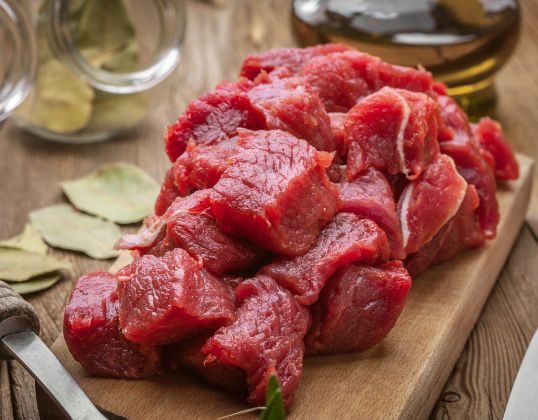
Selecting the right beef distributor is an important step for consumers in Bali, whether for household needs, restaurants, or ceremonial events. Some reasons why a trusted distributor is essential include:
- Quality Assurance: Meat remains fresh thanks to cold storage technology.
- Hygienic and Safe: The slaughtering and distribution process meets health standards.
- Transparent Pricing: Consumers need not worry about excessive price fluctuations.
- Product Availability: Distributors can provide various cuts of beef as needed.
By choosing the right distributor, consumers not only purchase meat but also safeguard cultural values and family health.
Recommendation: Happy Farm Bali as the Best Beef Distributor in Bali
After exploring various aspects—from economic roles, cultural meaning, to distribution challenges—one thing becomes clear: consumers need a trusted partner to meet their beef in Bali needs. Among the available options, Happy Farm Bali stands out as the Best Beef Distributor in Bali.
Happy Farm Bali provides high-quality beef that is fresh, hygienic, and meets modern standards without neglecting the cultural needs of Balinese society. With efficient distribution systems, competitive prices, and friendly service, Happy Farm Bali is the right solution for households, culinary businesses, and those preparing traditional ceremonies. By choosing Happy Farm Bali, consumers not only gain the best food products but also support the sustainability of Bali’s culture and local economy.
beef in Bali is more than just a food commodity. It reflects the life of Balinese society, rich in tradition, culture, and shared values. From traditional markets to fine dining restaurants, from sacred ceremonies to daily meals, beef is always present as an essential part of life on the Island of the Gods. However, in facing modernization challenges, consumers must be more selective in choosing a trusted distributor. For this reason, Happy Farm Bali deserves recognition as the Best Beef Distributor in Bali, capable of maintaining quality, respecting tradition, and supporting both economic and culinary needs of the people.
What is Black Angus Beef? Here are Some Facts About it!
Understanding Black Angus Beef
What is Black Angus Beef? - Black Angus is a type of premium beef that comes from the black-coated Angus cattle breed. This beef is widely known in the culinary world for its superior quality, especially its tender texture and naturally savory flavor. The specialty of Black Angus Beef lies in its marbling—fine streaks of fat evenly distributed within the meat—which results in a juicy taste and distinctive aroma when cooked. No wonder Black Angus Beef is a top choice in steakhouses and luxury hotels.
Angus cattle were first developed in Scotland, specifically in the Aberdeen and Angus regions, in the 19th century. The breed was selected for its natural polled (hornless) trait, deep black color, and ability to produce high-quality meat. Over time, Angus cattle were brought to the United States and other countries, including Australia and Indonesia, for breeding. The warning signs, amount of marbling, and distinct smell are all characteristics of high-quality Black Angus.
Black Angus Beef has distinctive visual characteristics. The meat has equally spaced white fat layers and exhibits a vivid crimson color. This marbling is an indicator of premium quality, as the fat melts during cooking, giving the meat its natural savory taste. Additionally, Angus Beef fibers are generally fine, making it easy to chew and suitable for a wide variety of cooking techniques.
The Advantages of Black Angus Beef

Flavor Superiority
Black Angus beef has a different flavor than ordinary beef. It has the ideal amount of softness due to its uniformly distributed fat content. The marbled fat creates an enticing aroma while it cooks. The natural savory flavor requires minimal seasoning, preserving its authentic taste. Its tender texture makes it a favorite among steak lovers, barbecue enthusiasts, and those who enjoy Indonesian beef dishes.
Nutritional Value of Black Angus Beef
In addition to having a great flavor, Black Angus Beef is high nutrients. It is a high-quality protein source the body needs for building and repairing tissues. The iron content in Black Angus supports red blood cell production, while vitamin B12 and zinc play vital roles in maintaining nervous system health and boosting immunity. Its unsaturated fats also contribute to nutritional balance when consumed in moderation.
Difference Between Black Angus Beef and Regular Beef
The most notable difference between Angus Beef and regular beef is the quality of marbling and tenderness. Angus cattle have natural genetics that produce higher and more evenly distributed intramuscular fat. In contrast, regular beef often has coarser fibers and less rich flavor. In terms of price, Black Angus is generally more expensive due to strict breeding and quality standards.
More About Black Angus Beef

The way the cattle are raised has a big impact on the quality of Black Angus Beef. Angus cattle farms typically provide natural feed such as fresh grass and high-quality grains. The cattle are kept in comfortable environments with regular health monitoring. This ensures the cattle grow healthy, stress-free, and produce meat with optimal texture and flavor. Good care also influences meat color and fat levels.
To maximize the deliciousness of Black Angus Beef, proper cooking techniques are essential. For example, Black Angus Beef steaks are best cooked to medium rare or medium doneness to retain tenderness and juiciness. Grilling, roasting, or pan-searing methods are often used to lock in flavor and aroma. However, Angus Beef can also be prepared in soups, stir-fries, or regional dishes without losing quality.
Demand for Black Angus continues to rise alongside growing public interest in premium cuisine. In Indonesia, luxury restaurants and hotels are the primary market for this beef. Many local farmers have started breeding Angus cattle to meet this demand, although much of the Black Angus is still imported from top-producing countries such as Australia and the United States. Its popularity extends beyond steak lovers to various modern and traditional dishes.
Tips for Choosing Quality Black Angus Beef
To get high-quality Black Angus Beef, pay attention to the meat color, amount of marbling, and freshness of its aroma. Fresh meat should be bright red with clean white fat—an indicator of good quality. Avoid meat that looks pale or has an unpleasant odor. If buying frozen, ensure the product has been stored at the correct temperature and has not been repeatedly thawed and refrozen.
Black Angus is a premium beef choice that offers tenderness, savory flavor, and high nutritional value. With its rich history, distinctive physical traits, and careful breeding process, this beef has become a star in the culinary world. Whether for simple dishes or luxurious meals, Angus Beef always delivers a satisfying dining experience. Understanding its characteristics, origins, and advantages will help you choose and prepare this beef correctly so every dish becomes special.
A premium meat option with outstanding flavor and texture is black angus beef. At Happy Farm Bali, customers not only receive the finest product—delicious beef of the highest quality—but also enjoy a unique experience with a peaceful atmosphere, friendly service, and high hygiene standards. This makes it the top destination for culinary businesses and individuals seeking premium beef. If you are looking for the authentic taste of the best Black Angus Beef in Bali, Happy Farm Bali is the answer. For more information, check our Instagram at https://www.instagram.com/happyfarmbali/

